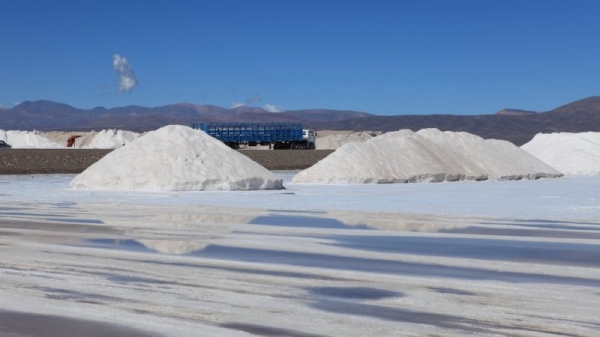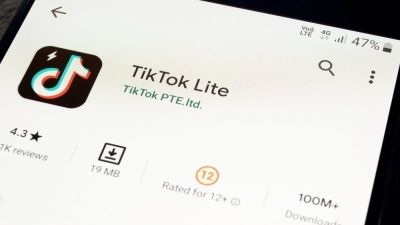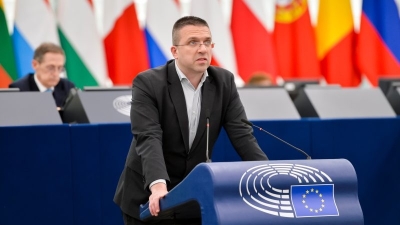A journey to the heart of Chile’s lithium communities

In Chile’s Atacama Desert, indigenous communities live alongside lithium mines, a key mineral for the EU’s energy transition. EURACTIV travelled there to find out how industry interests are balanced with the needs of the locals – particularly regarding water management.
At the end of the Río Putana River, 3,000 metres above sea level and wedged between the Barros Arana mountain range to the west and the Andes to the east, lies the village of Río Grande.
Río Grande is home to the indigenous Lickanantay people, who have inhabited the Atacama for millennia. The Río Putana River, which runs through the village, provides all the water necessary for cultivating the land and raising animals, creating a natural oasis in an otherwise arid region.
However, the delicate management of the area’s water resources has increasingly become a challenge for the village’s inhabitants; less than 100 kilometres from the village, a new industry is taking hold.
Lithium of Atacama
Under a saline crust spanning over 700 square kilometres are lithium deposits, the volumes of which are unlike anywhere else in the world.
Lithium is key in producing electric batteries in digital appliances and vehicles, making it a critical raw material for the clean energy revolution in Europe and beyond.
Sociedad quimica y minera de Chile (SQM) is the main mining company active in the region.

Lamas in the village of Rio Grande, 28 February 2023. [Paul Messad / EURACTIV]
“We have already had big problems with the copper industry not sharing its revenues with the communities,” Pamela Condori Cruz, a resident of Río Grande involved in many of the development projects currently active in the region, told EURACTIV.
As historic guardians of the sacred land, Condori Cruz said that industries working in the region must seek prior consent from local inhabitants before extracting the minerals, as well as respect cultural conservation practices, ensure access to information and uphold health and safety measures.
To secure mining rights without risking social conflict, companies like SQM maintain close links with the Chilean government and the communities of the Atacama.
Lithium extraction involves the industrial pumping of brine from the subsoil, which risks water stress in the region. This intentional water cycle disruption goes against local beliefs of the communities’ role as guardians of the land and, as such, has been at the heart of the dialogue between residents and companies such as SQM.
“We are talking to all the companies in the [lithium] sector. There is no reason to favour one over the other as long as they meet our expectations and needs,” said Condori Cruz.

The village of Río Grande is bordered to the east by the Andes and the border with Bolivia and Argentina, to the west by the Barros Arana mountain range and to the south by the Atacama Salt Flat. February 28, 2023. [Paul Messad / Plans]
A fair deal
In the context of Chile’s political and economic centralisation, communities such as those in Río Grande receive little state support.
“The government has abandoned us and prefers to meet expectations in [the capital] Santiago de Chile,” Condori Cruz said, adding that things got worse under the new president Gabriel Boric.
As such, residents are looking to mining companies to facilitate their economic development.
“While you [Europeans] have electric vehicles, what’s in it for us?“ she asked.
As part of the negotiations for land rights, the communities have asked for basic household equipment, safer access to electricity and agricultural equipment, and financing of development projects for the region.
One such project is a 150-solar-panel park at the top of the village, mainly financed by the lithium industry through the state, which ensures the town has electricity around the clock.
“At the beginning, we had six hours of electricity daily thanks to the diesel generator. Now, thanks to the solar power plant, we have electricity every day,” explained the President of the community, Hernán Elías Choque Mendoza.

A power plant of more than 150 solar panels was posted high up in the village on February 28, 2023. [Paul Messad / EURACTIV]
Approaching the ponds, Condori Cruz said she was relieved to see them full. “The last time I was here, [the ponds] were almost empty. I hadn’t seen them this full in a long time,” she said.
The community’s former president, Francisco Terán Terán, shared Condori Cruz’s relief, adding that water management has long been a struggle.
“Before, it was more complicated, especially in transporting water,” he told EURACTIV. “It’s better now; there is always water.”
However, to safeguard the future of crop irrigation in the region, two further water retention ponds are needed, Condori Cruz added.
The resident underlined the importance of verifiable results from the industry’s regional investments. “If projects are badly managed, it is quite possible that they will be abandoned. So we need to be very careful,” she explained.

Pamela Condori Cruz, interviewed in front of one of the plots of land irrigated by the water retention basin projects, 28 February 2023. [Paul Messad / EURACTIV]
A divisive issue
Despite these facilitation projects, strong hesitancy from the communities towards the expansion of lithium operations in the area remains, and debates over water management continue.
“It takes time and continued dialogue to build a strong relationship based on trust and cooperation,” acknowledged Denise Kirschner, SQM’s external affairs coordinator and organiser of the meetings with the communities in the Atacama.
In other localities, too, Condori Cruz explained, companies’ industrial interventions are seriously affecting water resources.
Juana Ansa Conzalez, a resident of Río Grande, said: “Lithium mining is just a temporary window, while agriculture is a long-term process. It is very important for all Chileans.”
The joint creation of Chile’s lithium economy is therefore taking shape through exchanges between the communities of the Atacama: Camar, Catarpe, Talabre, Toconao, Socaire, Quillaga and Río Grande. A portion of SQM’s workforce in the salt pans – 16%, or 240 people – come from one of these communities.
Condori Cruz also argued that the lithium industry should look more closely at alternatives. “There are other salt pans in South America. In Bolivia or Argentina, for example,” she said.
The Chilean, Argentinean and Bolivian salt pans form the “lithium triangle”, which comprises more than 50% of the world’s lithium resources.

In front an agricultural warehouse behind the Santiago de Río Grande church, one of the oldest in the country, on February 28, 2023. [Paul Messad / EURACTIV]
Shared responsibility
The EU has introduced regulations on battery manufacturing, which require compliance with social and environmental considerations to use a country’s strategic resources.
As the EU’s demand for lithium increases with the green transition, questions over social responsibility to indigenous communities will come increasingly to the fore.
Condori Cruz called on all companies in the lithium chain to take responsibility for the impacts on the local environment, “right down to automobile manufacturers”.
“Are they aware that people live near lithium mines?” she asked.



